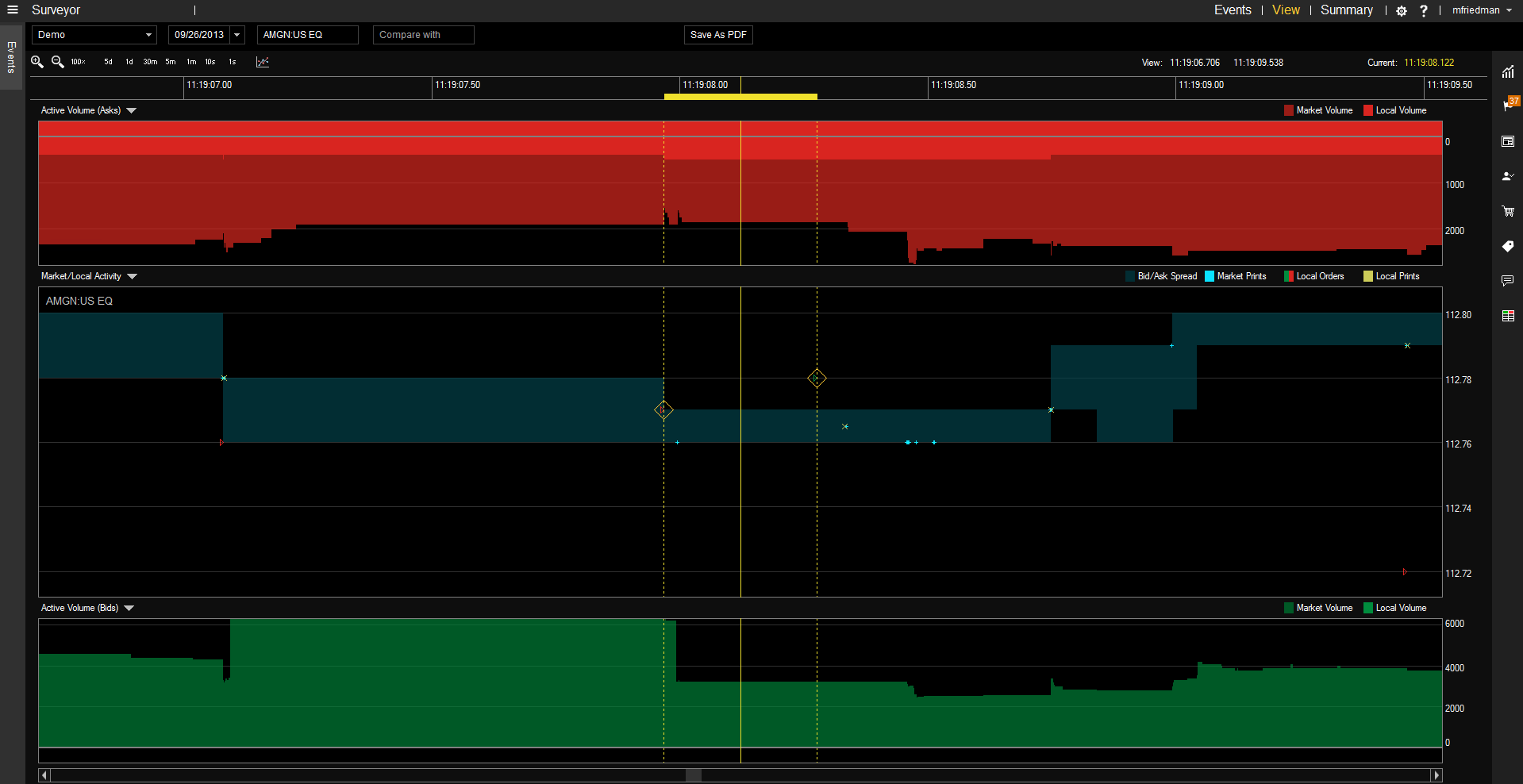Introduction to Spoofing
QUICK DEFINITION: Spoofing is the act of entering visible non-bona fide orders with the intent to mislead other traders as to the true level of supply or demand in the market.
By entering a new best bid (offer), a spoofer is able to entice other buyers (sellers) to execute against his offer (bid) at a superior (inferior) price than he would otherwise obtain. It is related to layering in intent, but requires fewer orders to pull off, so it cannot be detected using the same methods.

Example 1 of spoofing shown in Surveyor
Spoofing can occur when a trader narrows the spread by entering a new best offer (bid), is joined by other traders at that new best offer (bid), and then executes as a buyer against the joining liquidity (either at the joined best offer or at the midpoint). Example 1 above shows this pattern in Surveyor. The spoofer is able to buy at a cheaper midpoint than he would have obtained had he not first lowered the best offer.
Spoofing can also occur when a trader joins an existing best bid (offer) with substantial additional size, and then uses wash trade prevention tools to quickly cancel his portion of the best bid (offer) and trade as a seller (buyer) at the same price level against the other liquidity on the bid (offer). This “pull swipe” pattern is the subject of the pending CFTC action against Igor Oystacher (detailed here and here).
If you would like to know how to review a spoofing event in Surveyor, click here.
Further Analysis on Layering and Spoofing
Articles from Trillium experts analyzing and exploring spoofing:
Traders Charged in Multi-Broker Spoofing Scheme
Reviewing Igor Oystacher’s 111 contract orders in Surveyor
Flash Crash Spoofer questions, more questions, and some possible answers
The CFTC’s spoofing case against Igor Oystacher
A tale of two spoofers and the good news for HFT
Leading Layering and Spoofing Enforcement Actions
SEC v Joseph Taub and Elazar Shmalo